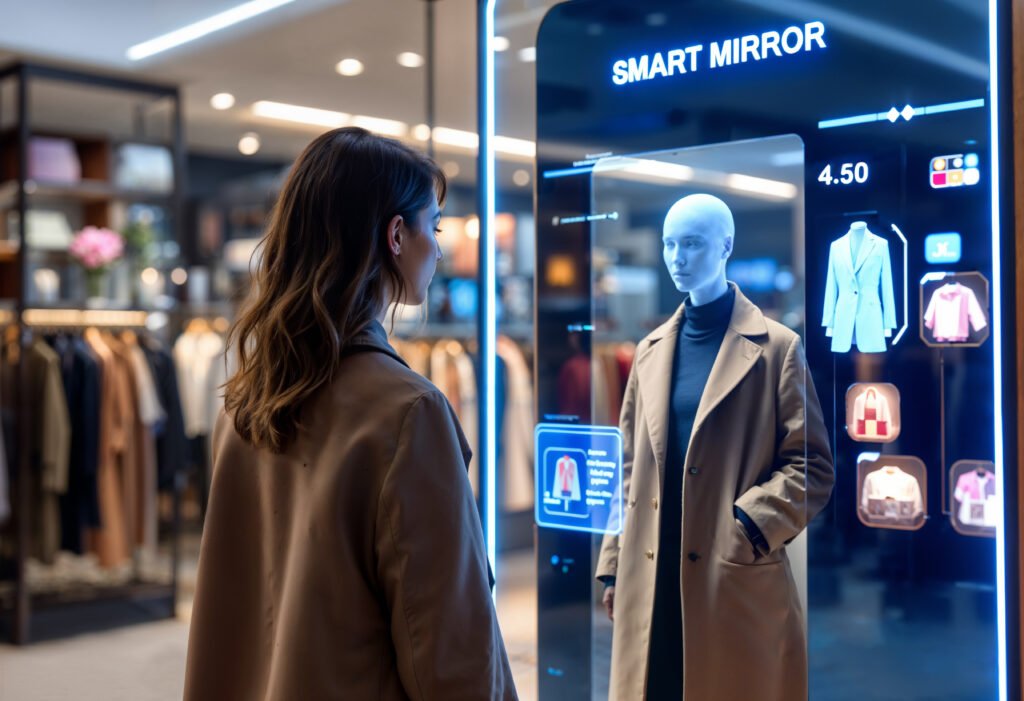
In the fast-paced world of retail, where every margin point is critical, few challenges are as persistent and damaging as retail shrinkage. This isn’t just a matter of a few lost items; it’s the multibillion-dollar discrepancy between what your inventory records say you have and what is actually on your shelves. According to the National Retail Federation (NRF), U.S. retailers lost over $140 billion in 2024 due to shrinkage, representing an average shrink rate of 1.6% of total sales. For many organizations, this loss is the difference between profit and loss, threatening financial stability and hindering growth.
At Klyff, we understand that protecting your bottom line requires a strategic, technology-forward approach that goes beyond traditional security measures. It demands a holistic view of your operations, leveraging data and integrated systems to build resilience.
Here, we break down the five most common causes of retail shrinkage and outline the proactive strategies CXOs can deploy to protect their assets and their future.
1. External Theft: The Rise of Organized Retail Crime (ORC)
While opportunistic shoplifting remains a concern, the landscape has been transformed by Organized Retail Crime (ORC). These are not petty thieves but sophisticated criminal enterprises that steal large quantities of merchandise to resell online or through illicit networks. The NRF reports that external theft, including ORC, accounts for approximately 36% of all retail shrinkage. The impact goes far beyond financial loss, with a significant increase in aggression and violence against store associates.
How to Protect Your Bottom Line:
The solution is a proactive, data-driven security strategy.
- Implement Advanced Surveillance and AI Analytics: Deploying high-resolution cameras with AI-powered behavioral analytics can detect suspicious activity in real time. These systems can identify patterns indicative of ORC, such as individuals loitering in high-value areas, multiple people working in tandem, or a significant number of items being placed in bags.
- Leverage IoT for Asset Protection: Integrate IoT sensors and RFID tags into your inventory. RFID technology provides real-time visibility into the location of every item, allowing you to instantly identify when and where merchandise is removed from the store without being purchased.
- Invest in Deterrents: Beyond the technology, physical deterrents like secure displays for high-value items, smart shelf technology, and visible security personnel remain crucial. The combination of overt and covert measures creates an environment that is less appealing to thieves.
2. Internal Theft: The Threat from Within
One of the most difficult forms of shrinkage to address is employee theft, which accounts for roughly 29% of all losses. This can range from a cashier pocketing cash to employees “sweethearting”—giving unauthorized discounts to friends and family—or even a warehouse worker diverting entire shipments.
How to Protect Your Bottom Line:
Combating internal theft requires a blend of operational rigor, cultural investment, and technology.
- Establish a Culture of Accountability and Transparency: A strong, ethical company culture is your first line of defense. Regular training sessions on loss prevention protocols, clear policies on disciplinary action, and a secure, anonymous tip line for reporting suspicious behavior are essential.
- Enhance Vetting and Onboarding: Implement robust background checks and a thorough onboarding process that emphasizes the company’s policies and values.
- Utilize Data Analytics to Spot Anomalies: Modern POS and inventory management systems can be integrated with AI to detect suspicious patterns. This could be a cashier with an unusually high rate of “no-receipt” returns, an employee processing an excessive number of voids, or discrepancies between inventory received and what is scanned into stock. These systems provide CXOs with the data needed to conduct targeted investigations.
3. Administrative and Process Errors
Not all shrinkage is intentional. A surprising amount—25.7%, according to some reports—is caused by administrative and human errors. These are the “silent killers” of your profit margins, including miscounting inventory, incorrect pricing, shipping and receiving mistakes, and data entry errors. While seemingly minor, they accumulate to a significant financial drain.
How to Protect Your Bottom Line:
The solution here is process optimization through technology and automation.
- Implement a Unified Retail Platform: An integrated platform that connects your POS, inventory management, and supply chain logistics reduces the need for manual data entry and minimizes human error.
- Automate Inventory Management: Move away from manual stock counts. Use automated systems like barcode scanning, RFID, and integrated inventory analytics to maintain a real-time, accurate picture of your stock levels. This allows you to quickly identify discrepancies and address them before they compound.
- Conduct Regular Audits: While automation reduces errors, it doesn’t eliminate them. Regular, random cycle counts and audits of key processes—especially at receiving docks—are crucial for maintaining data integrity and catching issues early.
4. Vendor Fraud
Vendor fraud occurs when a supplier short-changes you by billing you for more items than were delivered, delivering damaged goods, or providing lower-quality merchandise than agreed upon. This can be a hidden but significant source of loss.
How to Protect Your Bottom Line:
The key is to create a system of checks and balances and to build strong, transparent relationships with your suppliers.
- Implement a Rigorous Receiving Process: Every shipment must be meticulously verified against the purchase order and invoice. A two-person check system or a system with a digital trail can add an extra layer of security.
- Automate Audits and Reconciliation: Use your integrated retail platform to automatically cross-reference invoices with what was received. The system can flag discrepancies for immediate review.
- Foster Strong Vendor Relationships: Open communication and regular audits of your suppliers’ processes can help build trust and deter fraudulent activity.
5. Damaged, Expired, and Obsolete Goods
This category of shrinkage is simply about unsellable inventory. This includes products damaged in transit, expired food or medications, and items that have become obsolete due to a change in technology or season. While often seen as a cost of doing business, it can be a significant drain on resources.
How to Protect Your Bottom Line:
The focus here is on smarter inventory management and supply chain visibility.
- Optimize Your Supply Chain: Use data to better predict demand and optimize ordering, reducing the likelihood of overstocking perishable or seasonal goods.
- Implement Smart Shelving and Sensors: IoT solutions can monitor environmental conditions, such as temperature and humidity, for perishable goods. In addition, sensors can alert staff to items nearing their expiration date, allowing them to be pulled or marked down before they become a total loss.
- Analyze and Learn from Losses: Track every instance of damaged or expired goods. Analyze the data to identify the root cause—is it a problem with a specific vendor, a handling issue at a particular store, or a flaw in your storage process? This data-driven approach allows you to implement targeted solutions.
A Comprehensive Strategy with Klyff
At Klyff, we believe that the solution to retail shrinkage lies in a cohesive, intelligent platform that brings together all these strategies. Our Edge and IoT solutions are designed to give you unparalleled visibility into your operations, from the warehouse floor to the retail shelf.
We help CXOs build a resilient, secure, and profitable retail ecosystem by:
- Harnessing Real-Time Data: Our solutions leverage IoT sensors, AI-powered analytics, and integrated platforms to provide a real-time, accurate picture of your inventory and operations.
- Enabling Predictive Insights: We help you move from a reactive to a proactive stance, using data to predict potential shrinkage risks and address them before they impact your bottom line.
- Providing End-to-End Solutions: From initial architecture and design to full-scale deployment and ongoing support, we partner with you to build a system that is not only secure but also scalable and future-proof.
In a competitive market, every dollar of lost inventory is a dollar of lost profit. By understanding the true causes of shrinkage and leveraging the power of technology, CXOs can protect their assets, empower their teams, and build a more profitable and resilient business.



